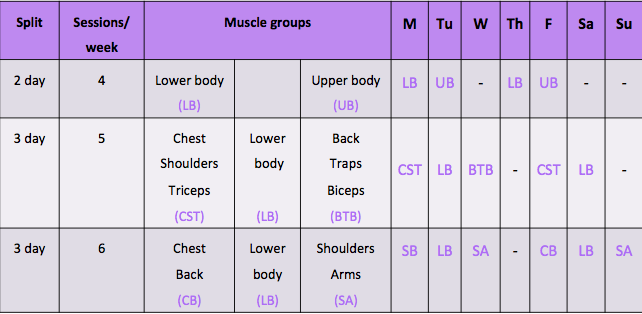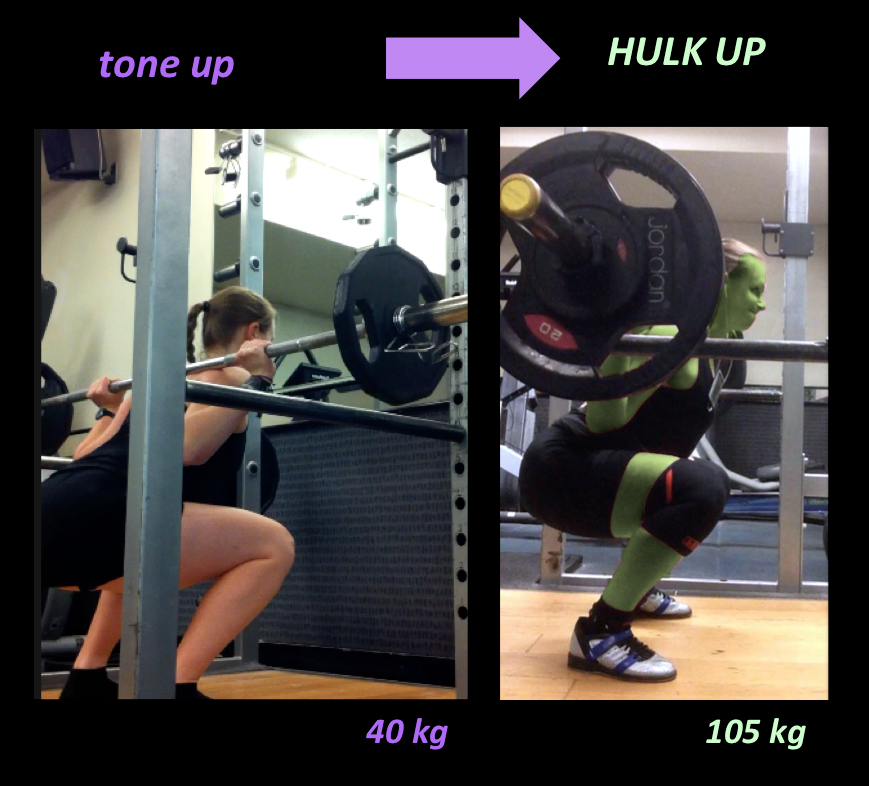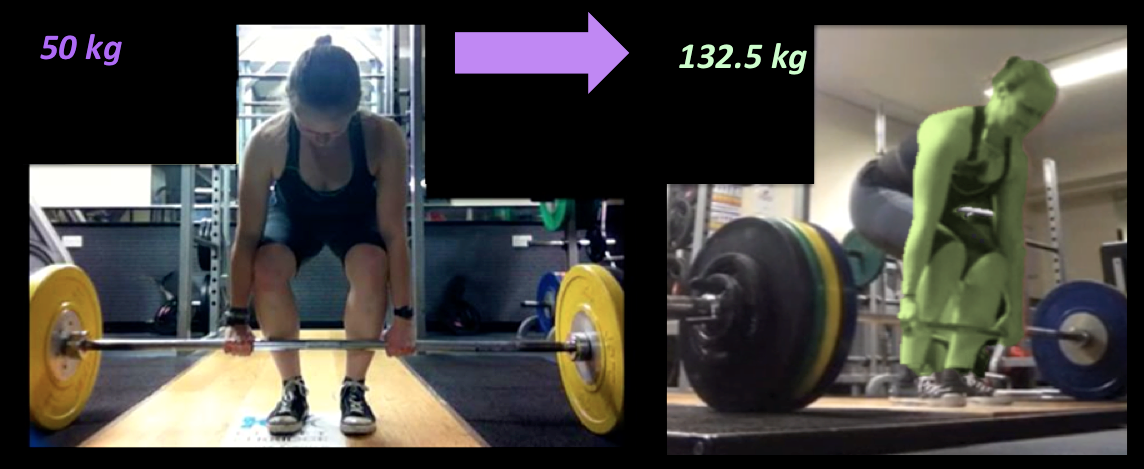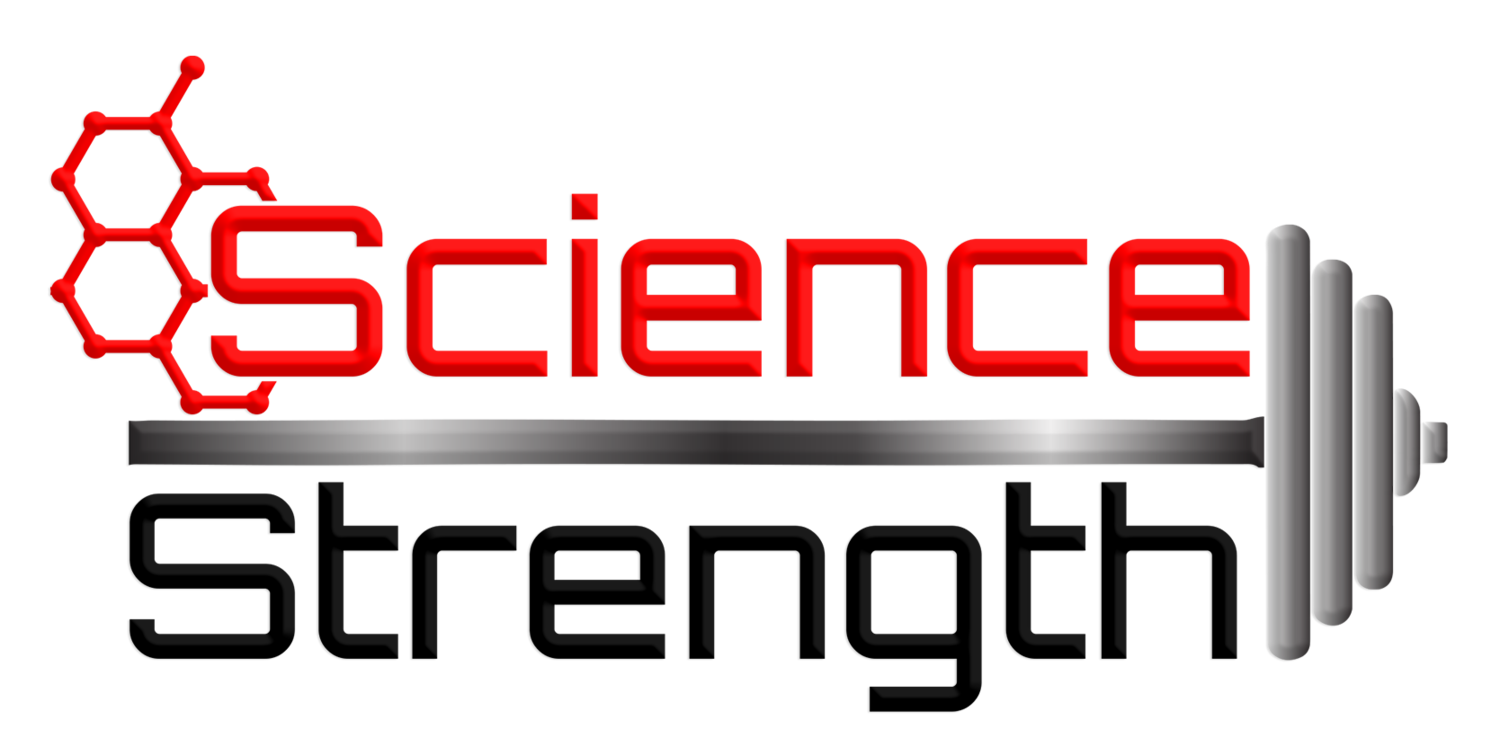“What is the best training routine?” – I heard this question so many times. Usually, my answer to this question is another question…Well, to be honest, other questions
What is your goal?
What is your training status?
What is your current training routine?
Most of the time ‘the best routine’ type of question is asked by beginners or intermediate lifters who want to get stronger.
If you don’t know what category you belong to and how many times a week you should train, check out is the NSCA classification and guidelines below.1

Ok, now let’s have a look at the ‘I want to get stronger’ part. Do you want to get stronger to get better in a particular sport (e.g. football) or just because you want to be badass? If it is the first, then consult a strength and conditioning coach to get advice what training routing makes sense for you. If you are one of those who want to hulk up, then read on…(for most women probably tone up ;-) )
If you just started resistance training,
… you have to learn proper technique first, before you start lifting heavy. I mean powerlifter-type of heavy. Your workouts should be challenging, use the black dumbbells, not pink ones ;-)
… you will see progress, even with low training frequencies (2-3 times a week).1
… you should give yourself enough time for recovery.1
Once you become more advanced, you
… can increase your training frequency to ≥ 3 times a week.1
… can start implementing a split routine type of training. This means you will train different muscle groups on different days. Some examples for split routines are given in the table below.1
… should plan your training sessions so that there is at least one, but not more than 3 rest days between sessions targeting the SAME muscle groups.1
… can start following programs like 5x5 if you want to get ‘powerlifter-type’ of stronger. Such programs are often described as beginner programs, however, in my opinion, these programs are good for ‘beginners with resistance training experience’. If you have never lifted before and start doing heavy sets of 5 without even knowing what you’re doing, then snap city may become your next destination.

Table adapted from ref. 1.
Tips based on my personal experience:
Exercise selection
Free weight compound (multi-joint) exercises rule. My strength and size progressed a lot when I started powerlifting training doing heavy squats, deadlifts, bench, overhead press, rows, dips and pull-ups. I had one year resistance-training experience at that point and have seen some progress, however, it was nothing compared to the results I got after I decided to stop toning up and start hulking up… it took me 1.5 years to get my squat from sets of 5 at 40 kg to sets of 5 at 105 kg.

...not sure if you will get such a beautiful, radiant skin though...it's the result of a unique combination of heavy lifting, vegan lifestyle and all the GMO work for my PhD :P

Also, machine exercises have their place in the program. I usually do them at the end of a training session, when I am more tired. It allows me to focus on particular muscle groups and reduces the risk of injury.
Isolation exercises are good to work on particular weaknesses that are the limiting factor for your strength development (e.g. if you get stuck with your bench progress because of your weak triceps) or if your goal is to increase the size of a particular muscles for esthetical appearance…for instance, if you think that it is super badass to have a huge biceps, but don’t care about your chicken legs.
Exercise order
Do compound exercises or the exercises where the risk of injury is higher first. Basically, the exercises you need the most focus and the most power for. Many machine and isolation exercises can be done at the end of a training session.
Form
Work on your form! It will never be perfect. If you are not sure if you lift with a good form and you don’t have anyone to check on it, then record yourself on video. Analyze your videos and do your own research on how proper technique looks like. In the emergency case, if you are not sure if you perform an exercise correctly, upload your videos to the internet and ask for advice. However, be cautious about the advice you get. Many people on social media love giving advice, no matter if they are knowledgeable or have no clue. Thus, screen for competence.
Also, never forget: different people have different opinions, different strategies and approaches to techniques. Stay open-minded and think about tips you get. Find what applies to you and works for you. There is no one-size-fits-all solution.
Time & Intensity
If you are short on time or want to increase the intensity of your workouts try to do supersets. Alternate exercises for different muscle groups, so that one muscle group can rest while you’re training the other (e.g. lat-pull down & leg curls superset).
If you want to increase your workout intensity to the ‘YOU ARE A MACHINE’ level, then you can add plyometrics to your supersets. Box jumps and burpees are great.
However, know what your workout goal is. If your workout focus is strength progress, then keep your rest periods longer (3-5 min) and do NOT superset. Heavy deadlifts and burpees superset is a no-go! In contrast, if your goal is to do a workout that keeps your heart rate up and increases your energy expenditure, then jump the hell out of it.
Everything is about balance
Guys, even if a big chest is your number one goal, please, train your back with the same volume as you bench.
And, ‘I want abs ladies’ – if you do 500 crunches every session, please, don’t forget to do 500 back extensions as well ;-)
For more, more advanced crowd (>> 1 year training experience)
A further increase in training frequency and volume, training each muscle group every day, may be actually beneficial at this stage.2,3,4
Do you think it will cause overtraining? Then try Smolov and tell me your opinion after you completed the program. Smolov won’t make you necessarily stronger or technically better, but will show you how adaptable the human body is. Often the limitation is not a person’s physical strength, but mental strength. Of course, when running a very intense training program, recovery is incredibly important. Eating right, sleeping well and reducing stress, all of these factors are crucial if you want to train with high volume and frequency and see progress.
For updates on nutrition, training and science subscribe to my list
References
- Baechle TR, Earle RW. Essentials of Strength Training and Conditioning. 2008.
- Kim PL, Staron RS, Phillips SM. Fasted-state skeletal muscle protein synthesis after resistance exercise is altered with training. J Physiol. 2005; 568(Pt 1): 283–90.
- Raastad T., Kirketeig, A., Wolf, D., Paulsen G. Powerlifters improved strength and muscular adaptations to a greater extent when equal total training volume was divided into 6 compared to 3 training sessions per week. Book of abstracts, 17th annual conference of the ECSS, Brugge 4-7 July 2012.
- Häkkinen K, Kallinen M. Distribution of strength training volume into one or two daily sessions and neuromuscular adaptations in female athletes. Electromyography and Clinical Neurophysiology. 1994; 34(2): 117-124.
